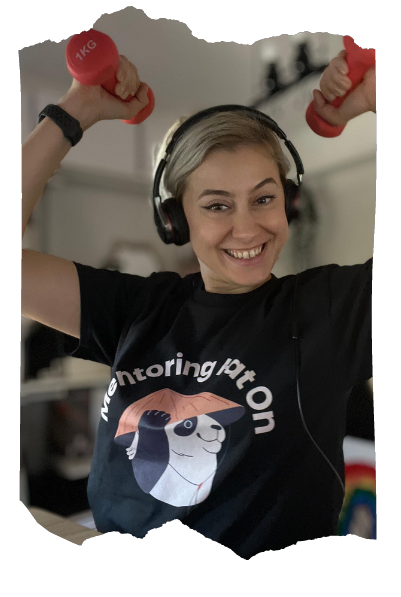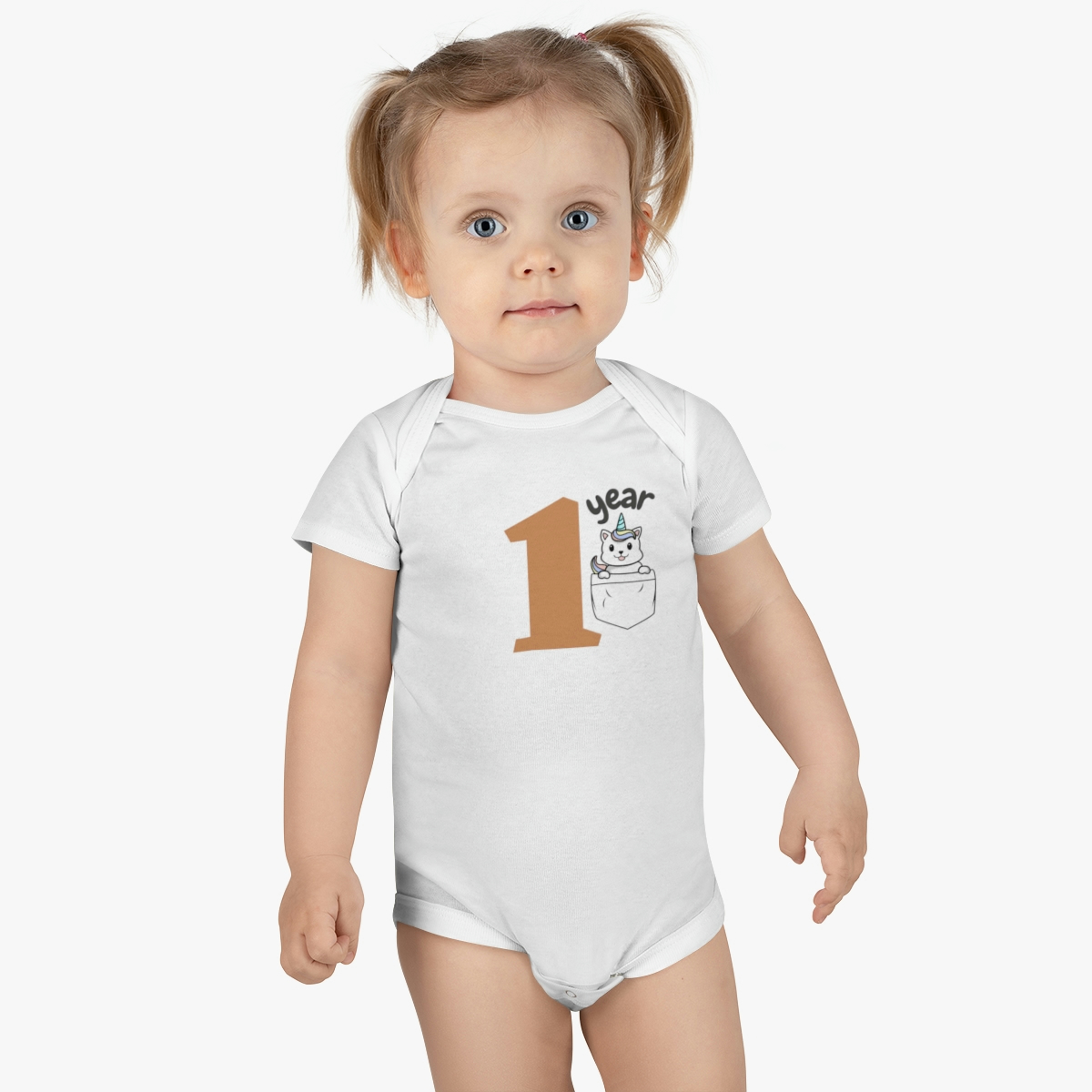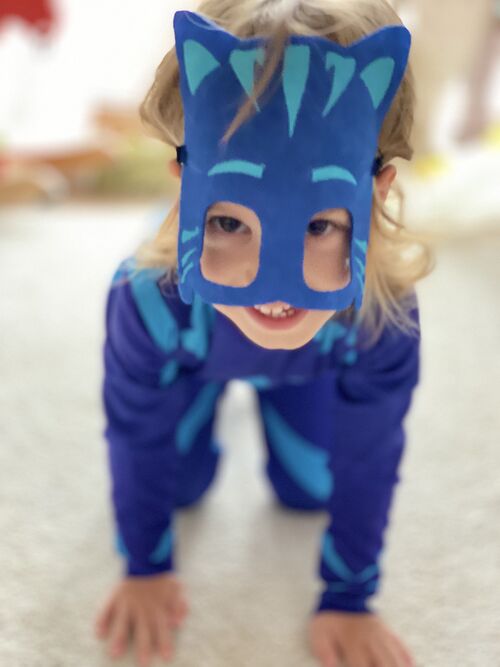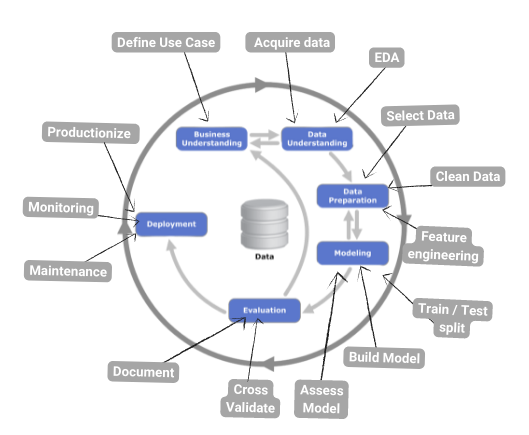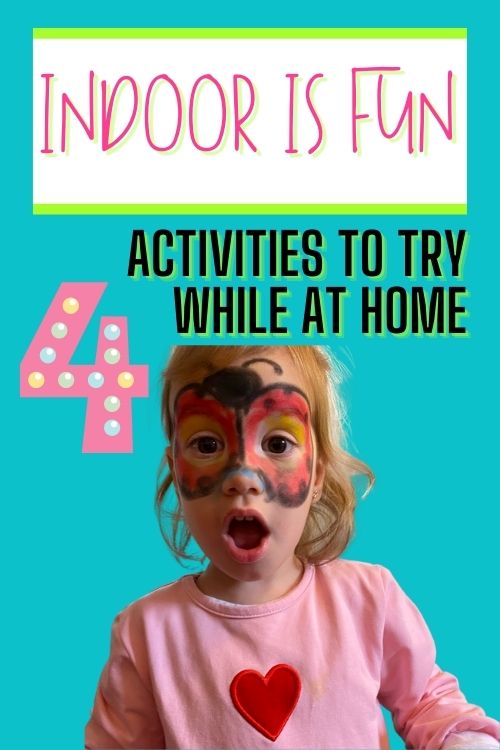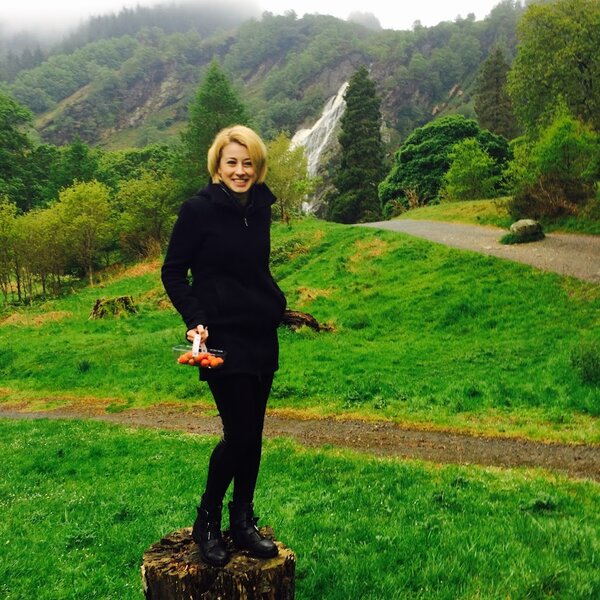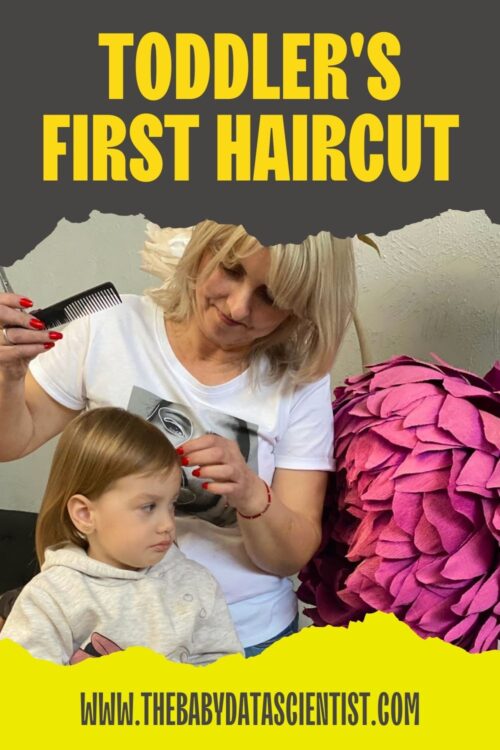Data science mentoring is my passion. I love helping data professionals step out of their comfort zones and achieve career growth. Recently, I had the opportunity to host a Gathers meetup called “Data Science Mentorship: A Win-Win Meetup.” At the meetup, I shared my thoughts on the benefits of data science mentoring and answered questions from the audience. This blog post is a summary of the questions and answers from the meetup. I hope this information is helpful to you, whether you are a mentor or a mentee. Benefits of data science mentoring Mentors: Mentoring can help you to develop your leadership skills, give back to the community, and learn new things from your mentees. Mentees: Mentoring can help you to learn new skills, advance your career, and build relationships with experienced professionals. Tips for mentors: Be supportive and encouraging. Your mentee needs to know that you believe in them and that you are there to help them succeed. Provide guidance and feedback. Help your mentee to set goals, develop a plan, and identify resources. Be a role model. Share your experiences and insights with your mentee. Tips for mentees: Be proactive. Don’t be afraid to ask for help and advice. Be open to feedback. Be willing to learn from your mistakes and grow. Be respectful of your mentor’s time and expertise. Ready to jump right in and uncover answers to some of the burning questions in the world of data science mentorship? 1. What is Data Science? Data science is a versatile field that equips data professionals with the tools to tackle complex problems and make informed decisions by applying mathematical and statistical concepts in a systematic and reproducible manner. Another way of explaining this is how I explain it to my kids: Data science is like playing a special game of hide and seek with your teddy bear. Imagine you really, really love your teddy bear, but you can’t remember where you left it in your room. You want to find it so you can hug it and feel happy again. So, you ask someone to help you, like a magic friend. This magic friend uses their superpowers to figure out where your teddy bear might be hiding. They look around your room, and when they get closer to the teddy bear, they say, ‘You’re getting warmer!’ But if they go in the wrong direction, they say, ‘You’re getting colder!’ Data scientists are like those magic friends. They help grown-ups with important stuff, like making sure cars don’t break down unexpectedly, deciding who can borrow money from a bank, and figuring out who might stop using a favorite game. They use their special skills to solve big problems and make the world a better place, just like how you want to find your teddy bear to make yourself happy again. For a more formal and concise definition of Data Science that you can use during an interview, consider the following: Data Science is the systematic application of scientific methods, algorithms, and data processing systems to extract knowledge and insights from diverse forms of data, encompassing both structured and unstructured sources. Find here a short article and a mini quiz. 2 .Where to start? Where to start in your Data Science journey depends on your current background. If you have experience in data-related fields like data analysis, software development, or software engineering, you already have a solid foundation. However, for beginners, the first steps often involve gaining a grasp of fundamental concepts in statistics and algebra. Here are some resources to help you get started: MIT OpenCourseWare: Statistics for Applications MIT OpenCourseWare: A 2020 Vision of Linear Algebra Data Science Roadmap 3. Which field should I master in? Data scientists who are versatile and adaptable are the most successful. This means being able to quickly understand any business and learn new technologies. Here are some tips for becoming a versatile data scientist: Learn how to learn. Data science is a constantly evolving field, so it is important to be able to learn new things quickly. This includes learning new programming languages, new machine learning algorithms, and new data science tools and technologies. Start with Python. Python is a popular programming language for data science because it is easy to learn and has a wide range of libraries and tools available. However, be open to learning other programming languages as well, such as Java, R, and Scala. Learn programming languages for general purposes, not just for data science. This will make you more versatile and adaptable. For example, learning Java will make it easier for you to work with big data technologies, and learning R will make it easier for you to work with statistical analysis tools. Learn clean coding practices. Clean coding is important for all software development, but it is especially important for data science because data science code is often complex and needs to be easily understood and maintained by others. This is a good article to read on Clean Coding. Learn modularity and design patterns. Modularity and design patterns are important for writing maintainable and reusable code. Stay up-to-date with the latest trends and technologies. The field of data science is constantly evolving, so it is important to stay up-to-date with the latest trends and technologies. Read industry publications and blogs, attend conferences and workshops, and take online courses. Initially discover the business you’re trying to help with ML / AI. Take the time to understand the business and the problem you are trying to solve. This will help you to develop effective machine learning solutions. Spend time in the business understanding phase and interview your stakeholder to unlock insights about the problem you need to solve. This will help you to develop a better understanding of the business and the needs of the stakeholders. By following these tips, you can become a versatile and adaptable
Category: Featured
The tradition of celebrating baby milestones has deep historical and cultural roots. While specific practices may vary across different cultures and time periods, the underlying concept of commemorating significant developmental milestones has been prevalent for centuries. In ancient times, many cultures believed that infants were highly vulnerable to malevolent spirits or supernatural forces. As a result, families would gather and engage in various rituals to protect and celebrate their newborns’ survival and growth. These rituals often included offerings to deities, prayers, and communal feasts. Over time, celebrations surrounding baby milestones have become more personalized and diverse. Modern parents often organize small gatherings or parties, inviting close family members and friends to witness and participate in the joyous occasions. These celebrations provide an opportunity for loved ones to share in the parents’ pride and excitement, offering encouragement and support to both the child and their caregivers. With the advent of social media, the documentation and sharing of baby milestones have taken on a new dimension. Parents now have the means to capture and share these special moments with a wider audience, allowing friends and relatives from afar to be a part of the celebrations virtually. In recent years, the market for baby milestone products and services has expanded significantly. From milestone-themed clothing and accessories to specialized photography sessions and personalized keepsakes, there are now countless ways for parents to commemorate and celebrate their baby’s developmental achievements. I vividly recall my first visit to the pediatrician with my firstborn. As the doctor inquired about my baby’s abilities, my husband and I shared a lighthearted joke, mentioning that our little one excelled in crying and going through 8 to 10 cloth diapers a day. Little did we know that our baby was capable of so much more. Understanding the expected milestones for each month of a baby’s first year is crucial in providing the necessary support and fostering their growth and development. As you celebrate your baby’s monthly milestones, there’s a wonderful way to capture those precious moments with DataWiseDesigns by The Baby Data Scientist. Introducing our collection of adorable onesies featuring monthly numbers and funny animals. These onesies are not only incredibly cute but also serve as a delightful way to document your baby’s growth throughout their first year. Each onesie showcases a unique design, with a cute animal representing each month, and a prominently displayed number to mark your baby’s age. Month 1: During the first month, babies are focused on adjusting to the world outside the womb. They begin to recognize familiar voices, respond to touch, and make eye contact. Month 2: At around two months, babies start to develop sensory awareness. They focus on objects, track them with their eyes, and exhibit social smiles. They begin to explore their surroundings by reaching out and grasping objects. Month 3: By the third month, babies show advancements in their motor skills. They can lift their heads during tummy time, kick their legs vigorously, and even bring their hands together. Month 4: Around four months, babies become more vocal. They babble and coo, respond to their name, and mimic sounds they hear. They may also discover their own reflection and enjoy watching themselves. Month 5: By the fifth month, babies achieve new physical milestones. They can roll over from their back to their tummy and vice versa. They also develop the ability to grab and manipulate objects using their hands. Month 6: At six months, babies achieve the major milestone of sitting up unsupported. They may also start showing an interest in solid foods and develop the ability to chew and swallow. Month 7: By the seventh month, babies become more mobile. They may start crawling or scooting to explore their surroundings. They become more curious about their environment and show interest in objects and people. Month 8: Around eight months, babies develop the strength to pull themselves up to a standing position and may start cruising along furniture for support. They also begin to understand simple commands and respond with gestures or vocalizations. Months 9-12: Between nine and twelve months, babies reach the milestone of taking their first independent steps. They become more adept at communication, using gestures and imitating simple actions. They explore the world around them with a newfound sense of independence and curiosity. Additionally, we are excited to share that DataWiseDesigns by The Baby Data Scientist is also available on Etsy. You can conveniently browse our collection of onesies with monthly numbers and funny animals, and place your order with ease: DataWiseDesigns.etsy.com Remember, the most important aspect of celebrating baby milestones is the joy and love you share with your little one. Whether you choose professionally designed onesies or opt for a DIY approach, what truly matters is the celebration of your baby’s growth and the creation of lasting memories. So, gather your crafting supplies, explore DataWiseDesigns’ digital products, and embark on a journey of creativity and celebration as you cherish each precious milestone in your baby’s amazing journey of growth and development: Tracking baby milestones can lead to some funny and memorable moments for parents. Here are a few lighthearted and amusing aspects of monitoring those milestones: The “Is It Time Yet?” Dilemma: Parents eagerly anticipate each milestone and sometimes find themselves constantly wondering, “When will my baby roll over? When will they start crawling?” The anticipation
2 studies, 2 views on the impact of superheroes over kids There are 2 primary studies that looked into the development impact of superheroes on kids: The 1st study suggest that parents may need to help their preschool children filter the messages arising from superhero media in order to minimize aggressive behavior outcomes and promote defending gestures on behalf of their most vulnerable peers. The batman effect study proves that positive effect is an active cognitive strategy that moves us forward with confidence as we stay in the stressful situation but with our alter-ego leading the charge: adopting an alter ego can also help children concentrate on a complex card game, in which they had to follow complex rules that kept on changing. Sailor Moon was my superhero obsession when I was a kid. Back in the day, all my friends had a favourite superhero to impersonate when we were playing together mimicking the cartoon. It was non-violent fun and games. I don’t recall any bad scenes while playing and mimicking Sailor Moon (maybe that more girls wanted to be “the Sailor Moon” at the same time”). via GIPHY Fast forward to 2022, Bianca, my 3 years old toddler, loves PJ Masks. They are 3 superheroes for the little ones: by day, they go to school like all the other kids their age. By night, this brave band of heroes dons their magic pyjamas, and sets out to face fiendish villains to stop them messing with your day! I read in this study that “Kids pick up on the aggressive themes and not the defending ones.” and I panicked a bit. 5 min later I realised that: I was Sailor Moon and I “punished” evil forces in the name of the moon. So, maybe the truth lies somewhere in between. As I am a true believer that “All models are wrong, but some are useful“, I look deeper into the matter: The Batman effect study investigated the benefits of self-distancing on young children’s perseverance: 180 four- and six-year-old children were asked to complete a repetitive task for 10 minutes while having the option to take breaks by playing an extremely attractive video game. Six-year-olds persevered longer than four-year-olds. Nonetheless, across both ages, children who impersonated an exemplar other – in this case, a character, such as Batman—spent the most time working, followed by children who took a third-person perspective on the self, or finally, a first-person perspective. Alternative explanations, implications, and future research directions are discussed. Results [wpdatachart id=1] The results of the study were analyzed by applying Analysis Of Variance ( ANOVA ) on the percentage of time on a task and comparing the 3 groups: self-immersed, 3rd person, and exemplar. ANOVA is normally used to analyze experimental studies. Analysis of Variance is a generalization of the hypothesis test for equality of means. Here, you have multiple populations, and you want to see if any of the population means are different from the other means. That means that the null hypothesis is that ALL the population means are equal to each other. The alternative hypothesis is that at least two of the means are not equal. Across both ages, children who impersonated an exemplar other – in this case a character, such as Batman—spent the most time working, followed by children who took a third-person perspective on the self, or finally, a first-person perspective. Interesting, right? Another article investigated the matter and concluded that some studies measure with low facts that boys are more impacted , others that there might be positive effects. (Note: I participate in the affiliate amazon program. This post may contain affiliate links from Amazon or other publishers I trust (at no extra cost to you). I may receive a small commission when you buy using my links, this helps to keep the blog alive! See disclosure for details.) Do you want to understand the basic concepts of statistics? Get this book: If you want to design and analyze your own experiments, then get this one: My view on this I like superheroes and I like to think that they can be 100% beneficial for kids… On the other hand, I saw plenty of almost-violent toddlers at the playground and none were wearing a cape. The parents should stop the aggressiveness. What I personally take away from this study, is that a toddler needs more clarification about what a superhero is. Superhero stories are often complex, but preschoolers may not fully understand the complexities behind the violence or aggression they witness. Superheroes represent the good, so it’s handy to explain the opposite of bad :). Exposure to superheroes ( and screen time) should be allowed in moderation. We should not be afraid of one single study. Kids’ personalities will give the general trend: if a toddler expressed aggressiveness, then yes, maybe exposure to superheroes is something negative for that kid. If your child’s aggressive acts are frequent and severe, or your efforts to curb them have no effect, you’ll need to consult your pediatrician or a trained mental health professional, such as a child psychologist or psychiatrist. My summary on this is that we all need a superhero in our lives… View this post on Instagram A post shared by Sailor Moon Memes (@sailormoon.memes) If you suffer from Sailor Moon nostalgia, you can get something on Amazon. Bianca has the 3 PJ Masks costumes, the watch, and another amulet. She loves them all… This is a personal blog. My opinion on what I share with you is that “All models are wrong, but some are useful”. Improve the accuracy of any model I present and make it useful!
The lifecycles below will guide you from the initial phase of a Data Science project through the project’s successful completion. It will enable you to divide the work within the team, estimate efforts, document all the steps of your project, and set realistic expectations for the project stakeholders. I believe that implementing a standard process model should be the Data Science norm, not the exception. CRISP-DM for Data Science I’ve been using CRISP-DM (Cross Industry Standard Practice for Data Mining) as a process model for my Data Science project execution work for a few years and I can confirm that it works. The process consists of 6 major steps and all the Data Science sub-tasks can be mapped as below: Data Science Lifecycle While studying for the DELL EMC Data Science Associate Exam, I learned that DELL also recommends a Data Science lifecycle. In the course, the Data Science lifecycle is also divided into 6 phases, named differently, but having the same functions: Discovery – Data Prep – Model Planning – Model Building – Communicate Results – Operationalize. The Data Science lifecycle it’s an iterative process; you’ll move through the phases if sufficient information is available. 1. Business Understanding Determine business objectives and goals Assess situation Produce project plan It might seem like you need to do a lot of documentation even from the initial phase (and this is considered one of the few weaknesses of CRISP-DM), but a formal one-pager with the signed-off Business Case, that clearly states both business and machine learning objectives, along with listing the past information related to similar efforts should be documented. This exercise will prioritize items in your backlog and protect you from scope creep. Pic. Source: The Machine Learning Project Checklist 2. Data Understanding Collect initial data Describe data Explore data Verify data quality This is the “scary”, time-consuming and crucial phase. I would sum it up as ETL/ELT + EDA = ♥ Acquiring data can be complex when it originates from both internal and external sources, in a structured and unstructured format, and without the help of a Data Engineer (they are so Rare Unicorns nowadays). Without having good quality data, Machine Learning projects will became useless. This part is missing in most online Data Science courses/competitions, so Data Scientists should learn how to do ETL/ELT by themselves. EDA (Explanatory Data Analysis) got simple as this can be automatically performed with packages like pandas profiling, sweet viz, Dtale, autoviz in Python or DataExplorer, GGally, Smarteda, and tableone in R. Some teams will use a mix of automated and custom EDA features. Data Preparation Select data Clean data Construct data Integrate data Format data This is another code-intensive phase and it means knowing your dataset in great detail so it gives you the confidence to select data for modeling, clean it and perform feature engineering. The EDA stage will tell you if you have missing data, outliers, highly correlated features, and so on, but in the Data Prep stage, you have to decide what imputation strategy to apply. You might go back to Business Understanding in case you form a new hypothesis or you require confirmations from Subject Matter Experts. Featuring engineering is a hot topic here. Until recently, this was a tedious task, mostly manual that involved creating new variables based on available features using data wrangling techniques. Data Scientists will use pandas in python and dplyr in R. Nowadays, frameworks like Featuretools will save the day. I wouldn’t rely 100% on an automated feature engineering tool, but overall, it’s a nice addition to a Data Science project. Feature selection Feature importance: some algorithms like random forests or XGBoost allow you to determine which features were the most “important” in predicting the target variable’s value. By quickly creating one of these models and conducting feature importance, you’ll get an understanding of which variables are more useful than others. Dimensionality reduction: One of the most common dimensionality reduction techniques, Principal Component Analysis (PCA) takes a large number of features and uses linear algebra to reduce them to fewer features. By the end of this phase, you’ve 70% – 80% completed the project. But the fun begins in the next phase: Modeling Select modeling techniques Generate test design Build model Assess model Once it is clear which algorithm to try (or try first), you’ll have to: from sklearn.model_selection import train_test_split . Splitting your dataset into train and test it is key for building a performant model. You’ll build the model on the trained dataset (usually consisting of 70% of your data) and check how it performed on the test dataset (30% of data). Don’t forget to: random_state / seed This code will help you reproduce the same random split result. Based on the complexity of the model, building the code can be as quick as writing 2 lines of code. For Python scikit-learn is your model building library. In R you have packages like caret, e1071, xgboost, randomForest, etc. While assessing the accuracy of your model, you might decide to go back to the previous step/s and reiterate. Time spent on modeling is subjective as models can be improved with more tuning, but if time is more valuable than the % increase in accuracy, you’ll want to move to the next step. Some rule of thumb in modeling is that you shortlist the models that have at least 70% accuracy for unsupervised and 80% for supervised. You should also look at the loss function, setting up the threshold, accuracy matrix, and sensitivity/specificity. Evaluation Evaluate results Review process Determine the next steps At this step, you’ll have to decide which model to select using tools like ROC Curves, the number of features, and also business feedback. You can find more reading on this topic here: I linked this blog as it’s written by a Data Scientist, with hands-on experience. Deployment Plan deployment Plan monitoring and maintenance Produce final report Review project While preparing for deployment, you should create a final report and document if the model met objectives, start monitoring model stability, and accuracy and when retrain should
At this stage, you managed to create your first Python project and saved all the packages used in a virtual environment. The next step is to collaborate with other data professionals. For a smooth collaboration with your peers, now you have to create a requirements.txt file with all the Python packages used and their respective versions. Create the requirements.txt: To automatically create the file, run the below line in the terminal: pip freeze > requirements.txt File usage There are numerous situations when you’ll use a requirements.txt file: share a project with your peers; use a build system; copy the project to any other location; project documentation. One more command line to remember for the first 3 situations: pip install -r requirements.txt It’s that simple! This is a personal blog. My opinion on what I share with you is that “All models are wrong, but some are useful”. Improve the accuracy of any model I present and make it useful!
Wait, what?? Why would you use R Studio as an IDE for running Python? There’s a simple answer to this question: this is the perfect Data Science IDE when you use R and Python together. You’ll find below the simple steps to help set up a project in R Studio so you can start using Python: Create an R Studio Project: Navigate and save your project: File -> New Project – > Existing Directory (linked to the GitHub folder if applicable) / New Directory ( if you work locally) . Create and activate Python virtual environment Each project might require different versions of packages and this can be encapsulated in a virtual environment. You’ll have to create and select the virtual environment as the Python interpreter for the RStudio Project and then activate. Install virtual environment with pip install in the RStudio terminal window (initial setup): pip install virtualenv Create the virtual environment for the current project (initial setup): virtualenv environment_name Activate the virtual environment for the current project (initial setup): on Windows: environment_name\Scripts\activate.bat on MAC: source environment_name\bin\activate Select Python interpreter Navigate and select your Python interpreter : Tools -> Global Options – > Python -> Select -> Virtual environments When you open the project, just remember to activate the environment: environment_name\Scripts\activate.bat (Note: I participate in the affiliate amazon program. This post may contain affiliate links from Amazon or other publishers I trust (at no extra cost to you). I may receive a small commission when you buy using my links, this helps to keep the blog alive! See disclosure for details.) If you’re new to RStudio , you can browse this book. Once you start coding, you might be also interested in reading: the 17 Clean Code standards to adopt NOW! “Freeze” your Python environment by creating the Requirements.txt file This is a personal blog. My opinion on what I share with you is that “All models are wrong, but some are useful”. Improve the accuracy of any model I present and make it useful!
In this post I am listing the scientific benefits of spending time outdoors and why it’s a good thing for both kids and adults. Now, I’ll write about how indoors can also be fun and educational for toddlers. When indoors, we have to be careful with the amount of screentime a toddler is exposed to. The American Academy of Pediatrics discourages media use by children younger than 2 and recommends limiting older children’s screen time to no more than one or two hours a day. (More on this here). When she has to stay indoors all day, Bianca, my eldest ( 2 years and 9 months today), has the below schedule: wakes up around 8 has breakfast at 9 morning activity ( cooking, painting) at 10 snack around 10:30 dancing at 11 independent play while mum prepares lunch 12 lunch time around 12:30 nap time 13-15 (1.5 hr – 2 hr) evening activities / English cartoons ( Romanian is her first language, but she knows plenty English words from books and cartoons) around 15:30 snack time at 16:00 independent play ( sensory activities: she likes water a lot) / crafts with mum at 17 dinner around 18 independent play at 19 bath time at 20 bedtime routine (reading 2/3 books and practicing English) at 20:30 bedtime between 20:30 and 21:00 Below, I have posted some videos and pics to show our indoor activities. They are super fun, but independent play is key! You should encourage your toddler to play by themselves daily ( in an incremental manner). They also need to explore the world with their tiny eyes. Make sure you give them toys age appropriate, so it won’t get dangerous, boring or frustrating when they play by themselves. (Note: I participate in the affiliate amazon program. This post may contain affiliate links from Amazon or other publishers I trust (at no extra cost to you). I may receive a small commission when you buy using my links, this helps to keep the blog alive! See disclosure for details.) Indoor Toddler Activity 1 – Cooking: Our kitchen helpers: Little helper learning tower The perfect multi food processor, Bosch MUM Indoor Toddler Activity 2 – Painting: Toddler painting set Indoor Toddler Activity 3 – Crafts: One of my few hobbies is creating interior design pieces with paint and lichen / moss. Bianca helps me and really enjoys the activity. I’ll create a separate post on it, but I’ll drop below some pics and what you need if you want to try it at home: lichen & moss glue gun and sticks acrylic paint paint brush set Indoor Toddler Activity 4- Sensory activities: This is a personal blog. My opinion on what I share with you is that “All models are wrong, but some are useful”. Improve the accuracy of any model I present and make it useful!
Spending time outdoors is beneficial for everyone. We hear this more and more, but what are the scientific facts behind this statement? I’ve broken up the topic into 3 sections, so you’ll see how outdoor activities positively impact our babies, toddlers and ourselves by encouraging healthy development and critical thinking skills and more. Outdoor time for babies In Scandinavian countries, babies get at least 2 hours of outdoor time. Nordic babies are exposed to sleeping in the stroller even when the weather is not perfect (perfect = negative temperature). The Nordic perspective on this is that one sleeps better while in the cold. Sleep consultants agree that when indoors we should have our babies sleep in 68 F – 70 F / 20 C -21 C (which might be considered cold for adults), but they won’t adhere to the idea of letting a baby sleep in the stroller. Motion sleep is compared to junk food and even called “junk sleep”. I personally think that sleep should be protected as much as possible and it should happen mostly in the bed. However, it’s OK for your baby to have a cat nap in the stroller, so the baby will have a quick recharge and get some natural vitamin D every now and then. (Note: I participate in the affiliate amazon program. This post may contain affiliate links from Amazon or other publishers I trust (at no extra cost to you). I may receive a small commission when you buy using my links, this helps to keep the blog alive! See disclosure for details.) Taking Your Baby Out for the First Time Getting outdoors with babies can be overwhelming for first time parents. On top of worrying about all the possible scenarios when your baby might fuss or even constantly cry, you’ll also concern yourself about forgetting to bring with you all the “crucial” baby stuff. Once you’ve repeated the outdoor activities a number of times, it will become the norm. Make sure you pack once and “refresh the stock” weekly: one full outfit change (for explosive poo – this will end up around 6 months of age, or when your baby will start solids); 3-4 diapers, disposable bags, cream, wet tissues, dry tissues; a travel baby changing pad; a blanket; formula ( if necessary); after solids are introduced, also get water and a baby food refillable pouch. Also important for outdoors activities is the right stroller. There’re so many strollers in the market. We decided over Baby Jogger Stroller with a universal platform (glider). The girls love it: Outdoor time for toddlers We acknowledge more and more the importance of outdoor time, but we spend less time playing outside. An UK study concluded that children spend half the time playing outside in comparison to their parents. Harvard experts researched 6 reasons why children need to play outside: Sunshine Exercise Executive function; These are the skills that help us plan, prioritize, troubleshoot, negotiate, and multitask; Taking risks Socialization Appreciation of nature I recently read an Irish article related to The Benefits of Outdoor Play and I really liked how it’s emphasized that children need to learn how to take calculated risk and that parents shouldn’t set too many limits to children’s adventurous play. They need substantial amount of time outside to boost their creativity, self-confidence, social skills and ability to concentrate. Going outside with toddlers is not too complicated. You just need a bottle of water, napkins, disinfectant, a healthy snack, a small toy and a bit of cooperation. At this age, they might be difficult to convince to get out and then even more difficult to get them back home. Outdoor time for adults Adults also benefit from spending time outdoors. There is a study showing that it takes as little as 2 hours per week spent outdoors for a healthier and happier life. It gives us the chance to absorb some natural vitamin D by walking in the sun for 15-20 minutes a day (maybe a bit longer during the winter time). I also stumbled upon a study on the relations between sleep, time of physical activity, and time outdoors among adult women. It’s quite interesting how they concluded that the morning time spend outdoors is a stronger predictor of sleep efficiency (as opposed to evening). Therefore, we should get into the habit of spending at least 15 min daily (in the morning) outdoors. This will improve our health and sleep! This is a personal blog. My opinion on what I share with you is that “All models are wrong, but some are useful”. Improve the accuracy of any model I present and make it useful!
I’ve been dreading the first haircut – now it’s too late. Bianca is 2 years and 9 months old and very active. She likes having her hair long ( like Elsa from Frozen) but desperately needs a haircut so the hair stays out of her eyes. Today it was mummy’s salon day, so I used the occasion to thick another box: Bianca’s first haircut Last week was a disaster. She’s halfway through the terrible twos and cries very often. So… she cried when the hairdresser touched her hair. There is no general recommendation related to the first haircut age. Still, you’ll find on the internet that most kids have their first haircut between 6 months and 2 years old. Bianca’s hair grew very slowly. See below a hair growth timeline from 6 months old to today: Today was a haircut win. Mummy’s stylist helped a lot. Vera has 3 kids and a lot of of experience, the little car helped as well :-)) The haircut took less than 5 mins, but for me it felt like an eternity. Like all new toddler experiences, parents are more nervous than necessary. We should have faith that everything is going to be OK and trust our kids more. (Note: I participate in the affiliate amazon program. This post may contain affiliate links from Amazon or other publishers I trust (at no extra cost to you). I may receive a small commission when you buy using my links, this helps to keep the blog alive! See disclosure for details.) While you’re struggling with toddler haircut, you can try some hair accessories. They’re so precious: Bianca loves Peppa pig, Minnie Mouse and Frozen. Toddler haircare When Bianca was a baby, we would have washed her hair at every wash. When she was 1 yo, I washed her hair every second wash and now it’s every 5 days. Shampoo wise, we’re using Bioderma ABCDerm from birth. When is it the time to move to something else? What are you guys using for your toddlers? Terrible twos are difficult, but kids are delicious at this age: I love her so much! This is a personal blog. My opinion on what I share with you is that “All models are wrong, but some are useful”. Improve the accuracy of any model I present and make it useful!
New job titles are confusing. When dad asked me what I do for a living, I told his that I’m a Data Scientist. By his look, I understood that a job title wasn’t enough to explain what I do, so I added: “I use current and past information to predict the future”. He seemed fascinated and we continued the conversation with some work examples. Dad is my biggest supporter, so he asked how can he be of help in promoting my new project. So I created a small experiment for dad in my blog. I wanted to see how good I was at explaining what a Data Scientist is to someone that has no connection to the industry. I created the Mini Data Science Quiz: 3 questions that can be answered in less than 1 min. Dad was 70% correct. In Data Science, if the model accuracy is above 70%, you’ve got a decent model. (Note: I participate in the affiliate amazon program. This post may contain affiliate links from Amazon or other publishers I trust (at no extra cost to you). I may receive a small commission when you buy using my links, this helps to keep the blog alive! See disclosure for details.) If you want to educate yourself in Data Science or start a career in Data Science, put these 3 materials on your list: R for Data Science Python Data Science Handbook Doing Data Science with Python Start a 10-day free trial at Pluralsight – Over 5,000 Courses Available Can you do better than dad? Mini Data Science Quiz This is a personal blog. My opinion on what I share with you is that “All models are wrong, but some are useful”. Improve the accuracy of any model I present and make it useful!

